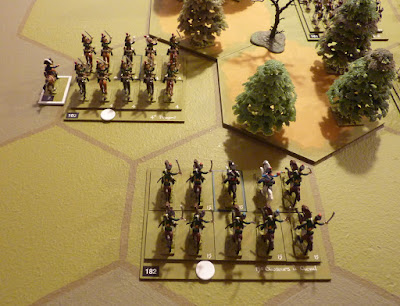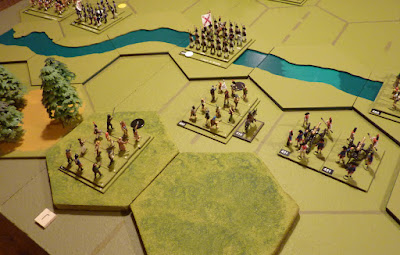It seems like yesterday, but it is now more than 30 years since that dreadful Saturday afternoon when a grandstand at Royal Ascot partially collapsed, crushing nearly a hundred spectators to death and injuring many more.
There is no real consolation to be had after such a disaster, it still makes my heart ache to think of it, but at least we know that the behaviour of the emergency and medical services on the day was heroic and could not be faulted, and that so much energy was put subsequently into pursuing a full enquiry, which very quickly identified what had happened, drew up failings and recommendations for improvements in safety regulations and - not least in importance - identified all the areas of accountability and proceeded to bring those responsible to justice.
It can have been of little comfort to the friends and families of the deceased, but it is pleasing that fair compensation was made in almost all of the cases, that all individuals or organisations who contributed to the accident by their own actions or errors were brought to very public account, and legislation was enacted to ensure that such a thing could never happen again. Of that much we can be proud.
Also, it is reassuring to recall that there was never any attempt to distort the story of what happened, nor to shift responsibility to the victims themselves, and - as I recall - no national newspapers or politicians were involved in a widespread campaign to cover up the facts, and no-one accused the families involved of being whining bin-dippers. At least I didn't hear of it.
Of course, it didn't really happen - not like that anyway. Around the same time, there was a crowd disaster involving Northern football fans, and it didn't go like that at all.
Even I am tired of this now. Having exonerated the crowd and the victims, the legal processes following the disaster which did take place - and they have moved with the speed and energy of a moth in treacle - have never been intended to deliver anything meaningful, ever. It has always been clear that eventually, if they held their breath for long enough, the people who caused the Hillsborough shambles and subsequently tried to change the narrative would never be answerable. It is surprising, but it still appears that no-one was at fault.
Not quite true - a former secretary of the football club at whose ground the accident occurred was fined a couple of years ago for not having his safety paperwork up to date. He was the token fall-guy, and he did not have to fall very far.
The latest - possibly the last - in a series of farcical legal non-events was a trial in Salford, involving three individuals - two former senior police officers and a lawyer who had acted on their behalf - who were accused of falsifying or amending police statements taken at the time. It ended a few days ago - a mistrial. It was a mistrial because the statements which were changed were for submission to the Taylor inquiry, which was not a court of law, so - on a technicality - VAR ruled it all offside. Case dismissed.
I expected nothing else, but I am more than a little cross to note that the lawyer who represented the lawyer (if you follow me) - a pip-squeak of a QC who has built a reputation on successfully defending crooks against all the odds (this is my interpretation, rather than the gentleman's actual wording in his promotional blurb) - also felt obliged to add the following comment to the BBC afterwards:
He said: “My client was accused of covering up criticism of the police. What he in fact did was cut out criticism of the Liverpool fans, whose behaviour was perfectly appalling on the day, causing a riot that led to the gate having to be opened, that unfortunately let the people in and crushed to death the innocents as they were – complete innocents – who were at the front of the pens, who had arrived early and were not drunk and were behaving perfectly well.”
So, it seems, the crowd behaved badly and were (by implication) drunk, and this was a major contributor to the event. He has also said a few other things elsewhere, but my blood pressure is not up to reading them again. His job for the day was to defend individuals accused of falsifying statements; the world does not wish to hear his personal views on the original disaster. The world, I believe, does not give a shit.
Whoever drummed up the crowd-funding necessary to get a 2nd Division QC to defend the case, it looks rather as though they didn't raise enough to get him to read through its archives. The alternative history version involving a rioting crowd was blown away in 2016. Old news. No good.
I don't know what happens next - probably nothing - but it would be nice to think that the QC in question might live to regret his words. Back in the day, Northern soccer fans were near enough to striking miners for Mrs Thatcher to be unable to tell the difference. I don't think that is going to wash now.
I refuse to get worked up about it, but I shall keep an eye open. God is listening. So is Mr Rees Mogg, apparently. That's a midfield to make anyone tremble.
***** Very Late Edit *****
It's been brought to my attention that, after the latest attempt at a trial was aborted (on, let us remind ourselves, a legal technicality), the defence lawyers expressed the views that the continuing persecution of the police offers involved was a "witch hunt" and a huge waste of public money, but that the dismissal of the case should put an end to suggestions of a cover-up.
No. Sorry. Everyone knows there was a cover-up. We haven't seen the full extent of it, but the solicitors should try to maintain some sense of reality. Give us a break.
**************************

















































